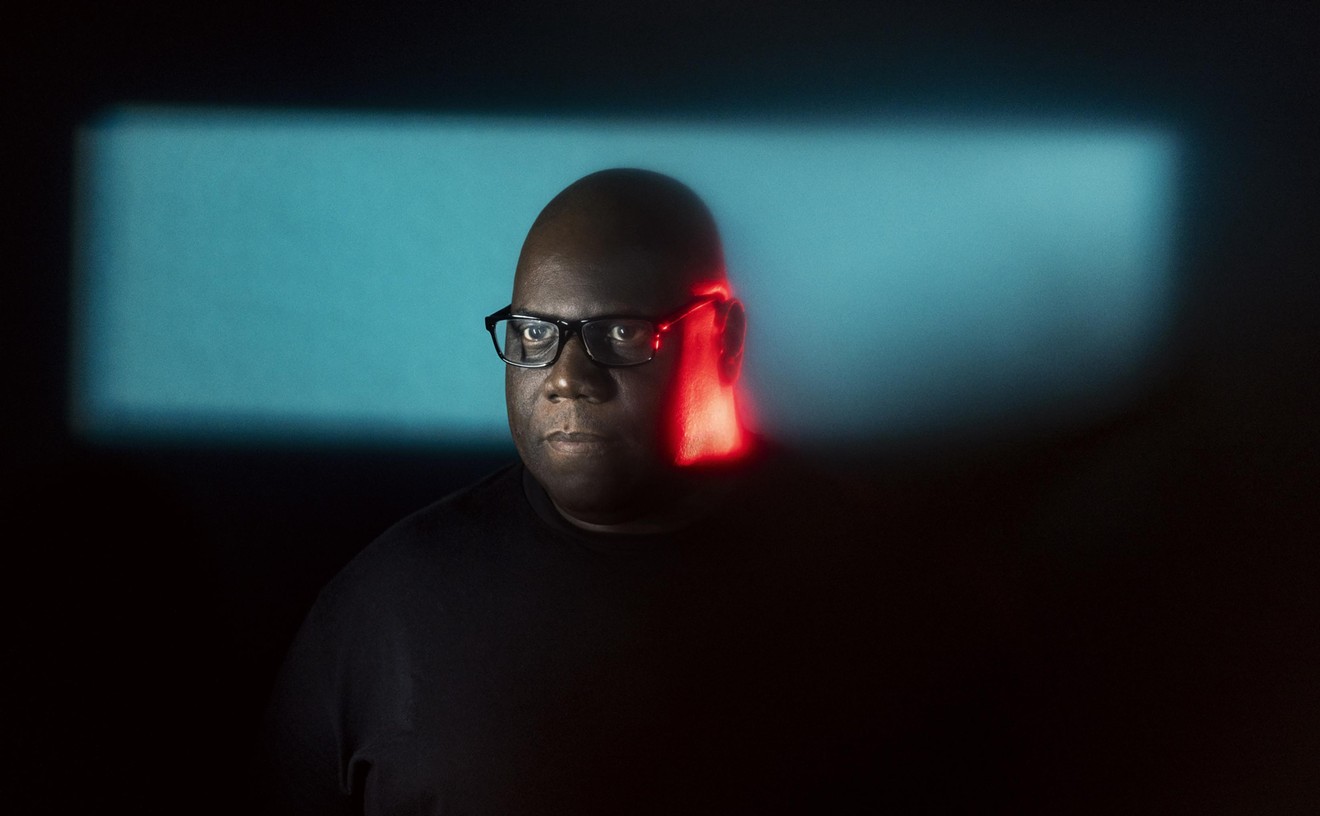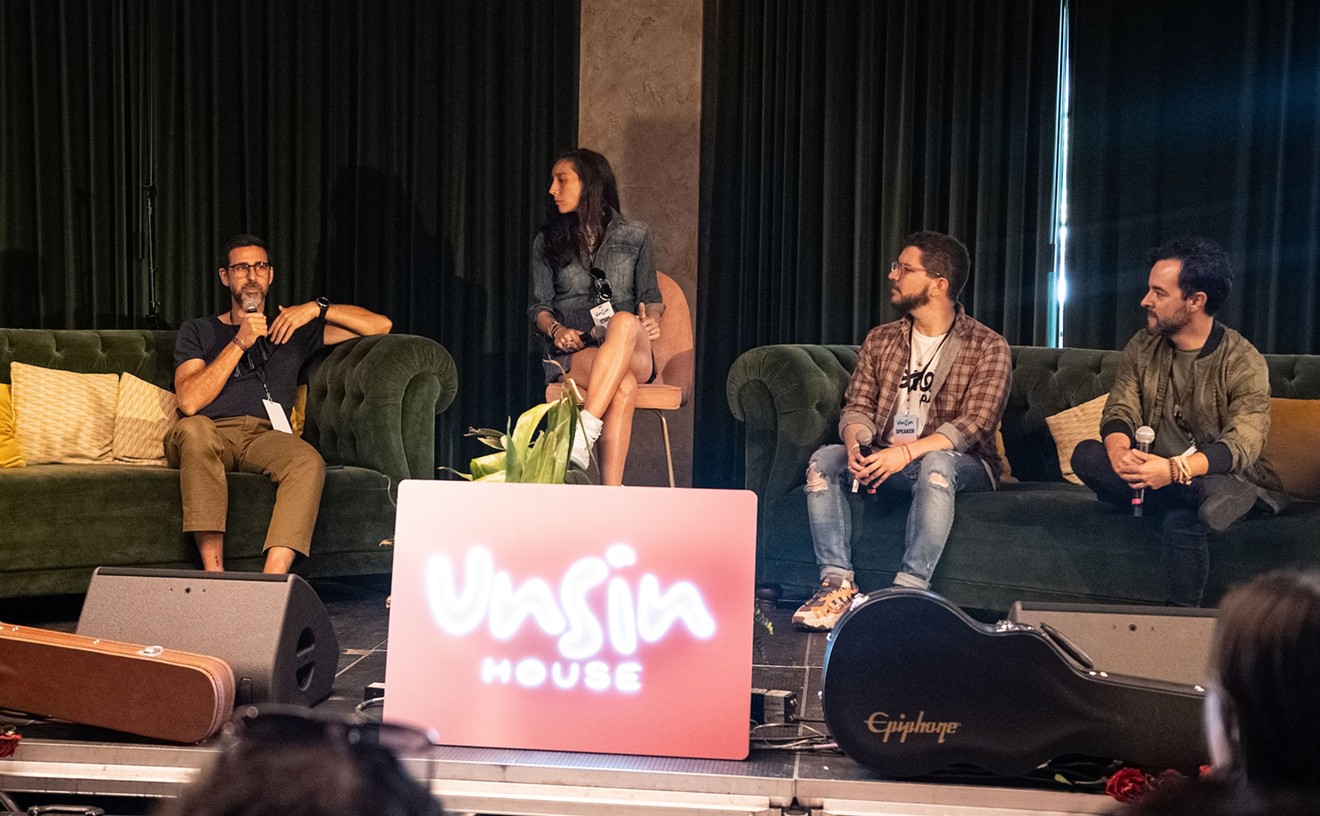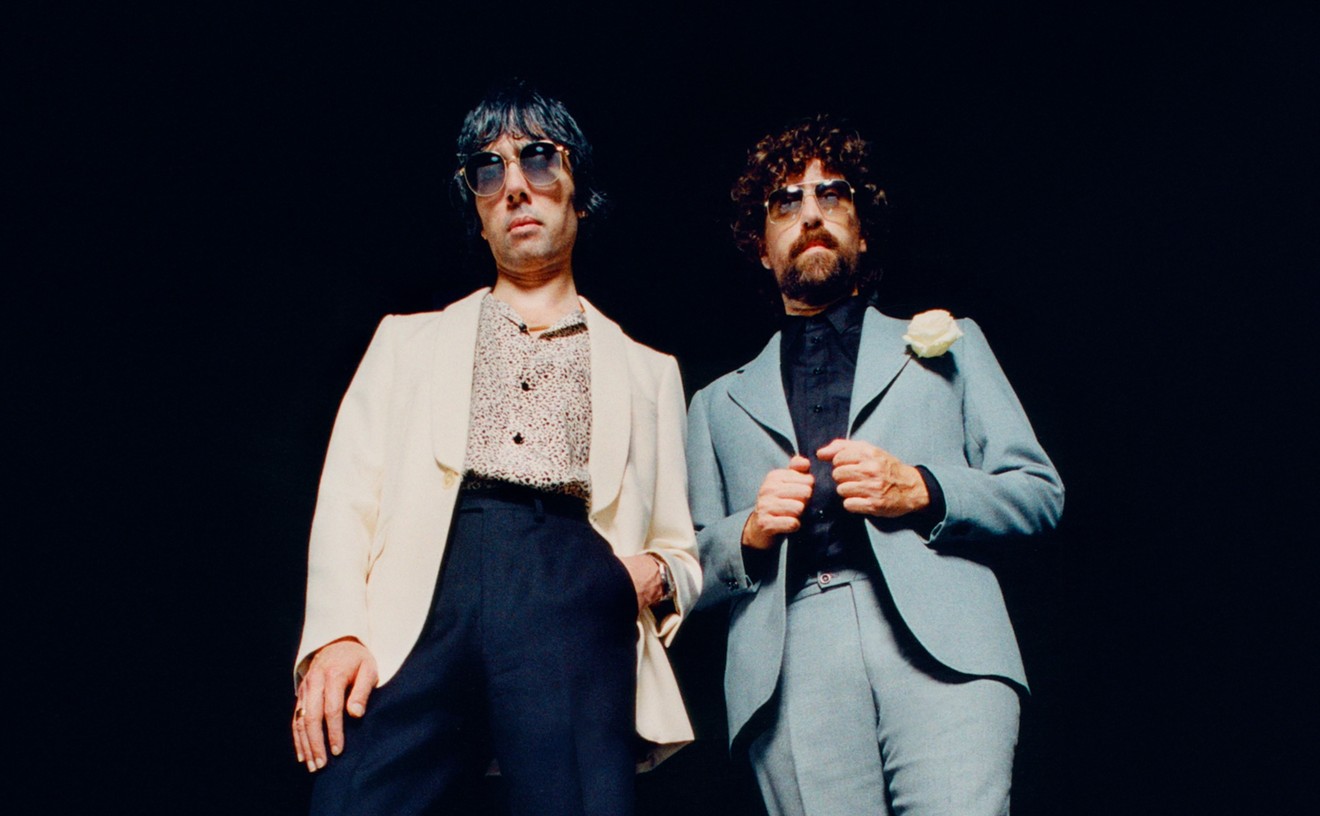In an adjoining room, the intensely colored images of artist Frank Flowers, the blueprintlike human figures of Randy Albright, and the acrylic wall engravings of Jacin Giordano seem to shift shape to the hues rolling from the DJ deck. As people filter in and out of the gallery, a pair of young poets discuss the exile influence on the local literary scene and weigh in on the merits of William Carlos Williams. A sign on the wall proclaims this "the thirteenth in a series of independent nomadic artshows, outside of commercial and educational contexts."
With clandestine gatherings such as this one, Duca and his collaborators attempt to fill the local music and art underground void. The events are evanescent: disappearing, reappearing, morphing into new formats. Yet Duca's influence is undeniable. As fellow musician and organizer Ben Wolcott observes, "He was the motivating force and basically started the whole thing."
The 45-year-old Duca knows a thing or two about scenes, having spent his entire adult life (minus six months as an architect) as a musician and artist, surviving the shifting sands of musical styles and the illegal parties of the Austrian underground from the early Eighties on. Duca caught the electronica wave on his own terms as it crested in 1992. Inspired by the Bert Kaempfert music of his youth, he became the "easy-listening guy" of Vienna when cutting edge was all about the hard-driving beat of techno. "I tried to make techno music, but it didn't come out right," Duca says of his early attempts as a solo artist. "That failure forced me to dig deeper. It was a Buddhist lesson of sorts." And it's one Duca has taken with him throughout his career, always looking beyond the latest developments of the techno scene and into the core of his own sound.
Duca's latest experiments have brought him to the doorstep of electronica's avant-garde with microsound, the digital crunching of microscopic fragments of sound. Microsound harks back to the industrial noise of the Italian Futurist movement at the start of the Twentieth Century, moves through the silent compositions of John Cage, and continues in the Nineties with the German group Oval, which created CDs that intentionally skip at random. With tracks like "Pop," a rhythmic assemblage of a record player's crackles and pops, Duca has become one of microsound's innovators. "I see myself as an explorer of sounds," Duca says.
But even now, as more attention is being paid to the microsound style, the innovator is off in another direction. "Right now I'm in a reorientation mode. Everything that's been done quite well, I don't want to go into it," explains Duca. "Now with the empty space on the other side, that's where I want to be. But maybe this time I'm wrong, and all the other artists will stay where they are and say, “What's he doing there?'"
By moving away from deconstructive and sample-based construction, Duca abandons the traditional song and album format of twelve to fourteen tracks per CD. "I'm combining this approach with the idea of a short attention span, to make very listenable and very rich music," he explains. "With the music I'm trying to become open and spacious without becoming new-agey."
Besides recent collaborations with electronic artist Tipsy and the Japanese-German vocalist Hanayo, Duca sits on an album's worth of music while stirring things up in his winter home with underground parties. Duca is not only a prime instigator of the events, he curates the electronic, electric, and acoustic musical acts, thoughtfully arranging the 30-minute sets that begin with head music and then shift to party music.
"My concept of how to put music together is very personal," Duca says of the lineup. "It tends to be more quiet in the beginning. If you put one artist next to another, it changes the way you perceive them, so you play with the context. It should be a variety and not always what people expect. And that's exactly the way I've been putting together my music.
"My impression is that there's not much going on here in Miami, but it's also quite open," he continues. "To have an underground scene, maybe you need bad weather, no nature, and social disparities as an element for ferment." But the instigator also recognizes the enthusiasm of the crowds who patronize the Miami parties. "You do this in New York, and nobody notices," he observes. "But here people are so starved for culture they're happy to be a part. And it works as long as people put the energy into it. It's nice to have something intellectually challenging with a party vibe," he muses. "I hope it's the seeds of a scene."










